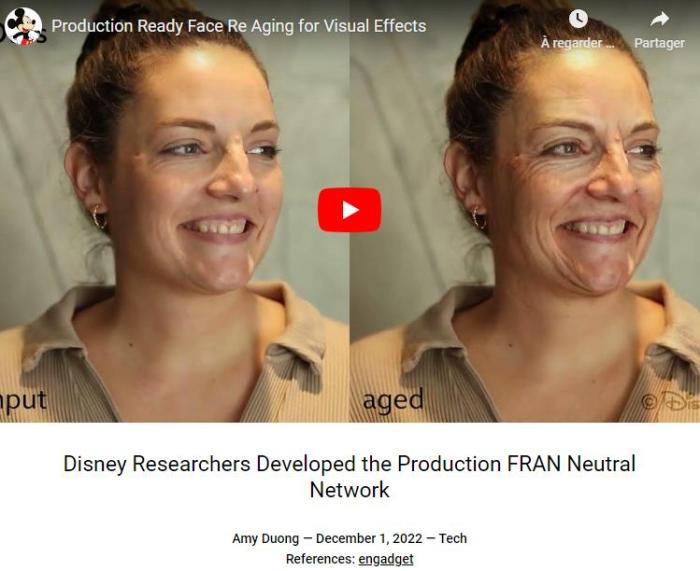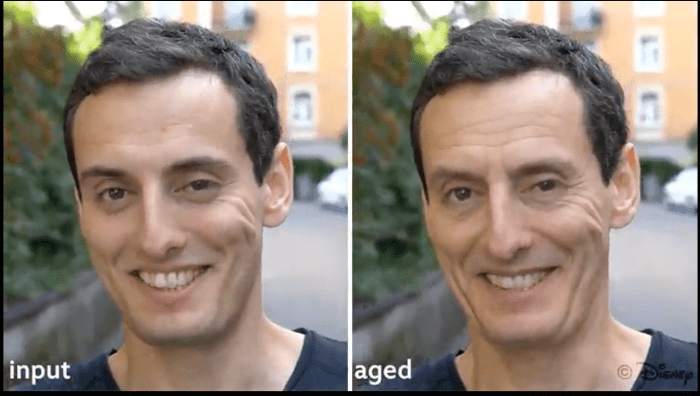The Challenge of Dubbing
Dubbing, the art of replacing the original dialogue of a film or television show with another language, is a complex process that requires more than just translating words. It’s about capturing the essence of the original performance, preserving the emotional impact, and ensuring that the dubbed dialogue syncs perfectly with the actors’ lip movements. While dubbing can make films accessible to a wider audience, it also presents a number of challenges that can affect the overall believability of the final product.
Lip-Sync Issues
Lip-sync issues are a common pitfall of dubbing, especially when the original dialogue and the dubbed dialogue differ significantly in length or rhythm. When the dubbed dialogue doesn’t match the lip movements of the actors, it can create a jarring disconnect for the viewer, making the film feel unnatural and distracting. This is particularly noticeable in scenes with rapid dialogue or complex emotions, where the actors’ facial expressions and lip movements play a crucial role in conveying the intended meaning.
Voice Mismatches
Another challenge is finding voice actors who can convincingly mimic the original actors’ voices and personalities. The ideal voice actor should not only have the right vocal range but also be able to capture the nuances of the original actor’s performance, including their tone, inflection, and emotional delivery. If the voice actor doesn’t match the original actor’s voice, the dubbing can feel artificial and detract from the overall immersion.
Cultural Nuances
Translating dialogue across cultures can be tricky, as words and phrases often have different meanings and connotations in different languages. For example, a joke that works in one culture may not translate well to another, and a phrase that sounds natural in one language may sound awkward or even offensive in another.
Examples of Poorly Dubbed Films
There are many examples of films that have been poorly dubbed, resulting in a loss of believability and immersion. One infamous example is the 1997 film “Titanic,” which was dubbed into several languages, including Spanish. In the Spanish dub, the voice actor for Leonardo DiCaprio’s character, Jack Dawson, was criticized for having a voice that was too deep and mature for the character’s age. The mismatch between the voice and the actor’s appearance made the dubbing feel artificial and distracting.
Expert Insights
Dubbing experts emphasize the importance of maintaining the original emotion and tone of the dialogue. They believe that the best dubbing is often invisible, seamlessly blending into the original film and enhancing the viewer’s experience. To achieve this, dubbing studios employ a team of skilled translators, voice actors, and sound engineers who work together to ensure that the dubbed dialogue is accurate, natural, and emotionally resonant.
Disney Research’s Innovation: Disney Research Finds A Way To Make Dubbing More Believable
Disney Research has developed a novel technology that utilizes deep learning to enhance the believability of dubbed audio. This innovation directly tackles the challenges of lip-sync inconsistencies and unnatural speech patterns often encountered in traditional dubbing processes.
Deep Learning for Dubbing Enhancement
This technology employs a deep learning model trained on vast datasets of synchronized audio and video. The model learns the intricate relationship between speech patterns and lip movements, enabling it to generate more realistic lip movements for dubbed audio.
- The model analyzes the original audio and generates a corresponding lip-sync sequence that aligns with the dubbed audio.
- The model then uses this generated lip-sync sequence to adjust the lip movements of the dubbed character in the video, creating a more natural and believable lip-sync.
The Process
The technology functions in a series of steps:
- Audio Analysis: The dubbed audio is fed into the deep learning model, which analyzes the speech patterns, including phoneme duration, pitch, and intonation.
- Lip-Sync Generation: Based on the analyzed audio, the model generates a corresponding lip-sync sequence, creating a frame-by-frame representation of lip movements that align with the dubbed audio.
- Video Adjustment: The generated lip-sync sequence is then used to adjust the lip movements of the dubbed character in the video, aligning the lip movements with the dubbed audio.
Key Features
This innovative technology offers several key features:
- Improved Lip-Sync: The technology significantly improves lip-sync accuracy, ensuring that the dubbed character’s lip movements closely match the spoken words.
- Natural Speech Patterns: The deep learning model captures the subtle nuances of speech, resulting in more natural and believable speech patterns for the dubbed character.
- Reduced Post-Production Effort: By automating the lip-sync adjustment process, the technology reduces the time and effort required in post-production, making the dubbing process more efficient.
Applications and Potential Impact
This groundbreaking technology, developed by Disney Research, has the potential to revolutionize the dubbing industry, extending its reach far beyond the realm of animated films. The ability to create more believable and natural-sounding dubs can open doors to new markets and enhance the overall viewing experience for audiences worldwide.
Impact on the Dubbing Industry
The impact of this innovation on the dubbing industry is multifaceted, potentially leading to significant cost savings and increased audience engagement.
- Reduced Costs: By automating some aspects of the dubbing process, the technology can potentially reduce the time and effort required to create high-quality dubs. This can translate into cost savings for studios and production companies, making dubbing more accessible for a wider range of projects.
- Increased Audience Engagement: More believable dubs can enhance the overall viewing experience, leading to greater audience engagement and satisfaction. This can translate into higher viewership numbers and increased revenue for content creators.
Potential Applications Beyond Disney Productions
The applications of this technology extend far beyond Disney productions, encompassing various entertainment industries:
- Television Shows: This technology can be applied to dubbing television shows, ensuring that foreign language audiences can enjoy the same level of immersion and emotional connection as viewers of the original language version.
- Video Games: The technology can be utilized in the localization of video games, creating more believable and immersive experiences for players in different regions.
- Documentaries: The technology can be applied to dubbing documentaries, making them accessible to a wider global audience and preserving the authenticity of the original content.
Hypothetical Scenario: Implementing the Technology in a Real-World Project
Imagine a scenario where a major international streaming platform decides to implement this technology for dubbing its popular original series. The platform aims to expand its reach to new markets and cater to a global audience.
Benefits
- Enhanced Viewer Experience: More believable dubs can enhance the viewing experience for audiences in non-native language markets, potentially leading to increased viewership and subscriptions.
- Cost Savings: Automating some aspects of the dubbing process can potentially reduce the overall cost of localization, making it more financially viable to expand into new markets.
- Increased Accessibility: The technology can make content accessible to a wider audience, including those who may not be fluent in the original language.
Challenges
- Technical Implementation: Integrating the technology into existing workflows can present technical challenges, requiring significant investment and expertise.
- Maintaining Authenticity: Ensuring that the dubbing process preserves the authenticity and nuance of the original content can be a challenge, requiring careful consideration and skilled voice actors.
- Cultural Sensitivity: Dubbing for different cultures requires sensitivity to local customs and language nuances, which can be a complex task.
Ethical Considerations
The advent of Disney Research’s technology for more believable dubbing raises significant ethical considerations, particularly regarding its impact on the voice acting industry and cultural authenticity. While the technology promises to enhance accessibility and broaden the reach of entertainment, it’s crucial to examine its potential drawbacks and ensure responsible implementation.
Impact on Voice Actors
The emergence of this technology could potentially displace voice actors, particularly those specializing in dubbing. This raises concerns about job security and the livelihoods of individuals who rely on voice acting for their income. The technology’s ability to convincingly mimic voices could lead to a reduction in the demand for human voice actors, potentially disrupting the industry.
Cultural Authenticity, Disney research finds a way to make dubbing more believable
Another ethical concern relates to the potential for this technology to compromise cultural authenticity in dubbed content. The technology’s ability to perfectly replicate accents and dialects could lead to the homogenization of cultural nuances and the erasure of regional and linguistic diversity. The goal of achieving a more believable dub could inadvertently result in the loss of the original cultural flavour of the content.
Responsible Use and Ethical Guidelines
To mitigate these ethical concerns, it’s imperative to establish ethical guidelines for the development and use of this technology. These guidelines should prioritize the preservation of cultural authenticity, the protection of voice actors’ livelihoods, and the responsible use of this powerful tool.
- Transparency: Audiences should be informed when dubbing technology is being used, allowing them to make informed decisions about the content they consume.
- Collaboration: Developing this technology in collaboration with voice actors and cultural experts can help ensure its responsible implementation and mitigate potential negative impacts.
- Education: Educating the public about the nuances of dubbing and the importance of cultural authenticity can help foster understanding and appreciation for the art of voice acting.
- Ethical Use: The technology should be used in a way that respects the cultural context of the original content and avoids perpetuating harmful stereotypes or cultural appropriation.
Balancing Benefits and Drawbacks
It’s crucial to acknowledge the potential benefits of this technology, such as increased accessibility to entertainment for diverse audiences and the potential for creative experimentation. However, it’s equally important to recognize the potential drawbacks and address them proactively.
- Job Displacement: The potential for job displacement in the voice acting industry requires careful consideration and potentially the development of retraining programs or support for affected individuals.
- Cultural Sensitivity: The technology’s potential to impact cultural authenticity highlights the need for careful consideration of cultural nuances and the involvement of cultural experts in its development and implementation.
Disney research finds a way to make dubbing more believable – The implications of Disney Research’s innovation extend far beyond the realm of animated films. This technology has the potential to transform the entire dubbing industry, opening up new possibilities for creating engaging and culturally sensitive content for a global audience. As we move towards a more interconnected world, where language barriers are increasingly blurred, the ability to create believable and immersive dubbed experiences becomes more crucial than ever. Disney Research’s groundbreaking work paves the way for a future where language is no longer a barrier to enjoying compelling stories and experiencing the magic of cinema.
Disney Research is making waves with their groundbreaking work on making dubbed films more believable. Their focus on subtle facial expressions and movements is changing the game, making the experience feel more authentic. It’s almost as mind-blowing as learning that skyscrapers might not cast a shadow at all , depending on the time of day and the angle of the sun.
Just like these architectural wonders defy expectations, Disney’s research is pushing the boundaries of what’s possible in the world of film.
 Standi Techno News
Standi Techno News

